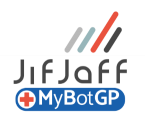Business automation adds tremendous value when implemented in the right places correctly. Businesses use teams of people to perform tasks. The reality is that many of these tasks can be delivered by software robots/ automated, running by themselves with minimal management or input from people and at a lower cost.
For example, take a team of three of six people doing administrative tasks, and the likelihood is you can use software robots to automate 40% – 70% of what they do. The robot will do it faster, without errors, 24/7-365, without deviation and at a lower cost. You can now realistically reallocate 40% – 70% of the teams time to do other work. Automation (once installed) is cheaper than using people; the yearly expenditure is licencing only. Bots have a tremendous capacity and run 24/7-365, five times faster than a person, so multiple teams can utilise them at different times of the day or night.
What’s the difference between business automation and intelligent automation or IA or RPA?
Business automation is a generic term used to describe the way we use automation to increase efficiency. Deliver the same or better service at a lower cost. The big picture term is “Digital Transformation”. Moving your business into a more digital environment, less paper, better systems, and processes. Whilst this is being done, you can remodel how some operations are delivered and link to other parts of the business, and include tools like automation, monitoring, and AI. Take advantage of these tools to support your human workforce to deliver more at a higher quality with less cost.
To do this properly, avoid automating the wrong things, not picking the best software, overspending on consultancies to build and gaining confidence from management.
It’s essential to have a COE (centre of excellence) to maximise business automation value. A framework to identify processes, manage IT, governance, training, architecture, and accountability. The team can be small or part-time, but it must be there. You will be replacing people with automation, and this is serious. Not factoring in SLA’s, DR, back up plans, roles, and responsibility can result in automation, creating more problems than the people you use to run these processes in the first place!
The JifJaff Nine Pillar RPA COE programme considers all this. Long term, correctly approaching automation through a centre of excellence is more cost-effective. Processes automated quicker – start receiving business value sooner, at a lower price, build business confidence to automate more – making the business stronger and ensuring licence spend on robots is minimised as you know how to maximise each one.
